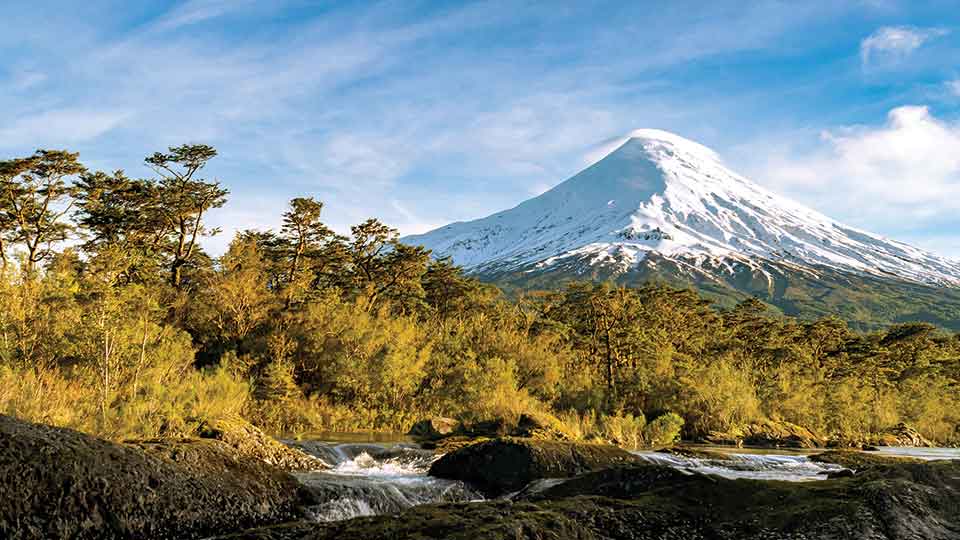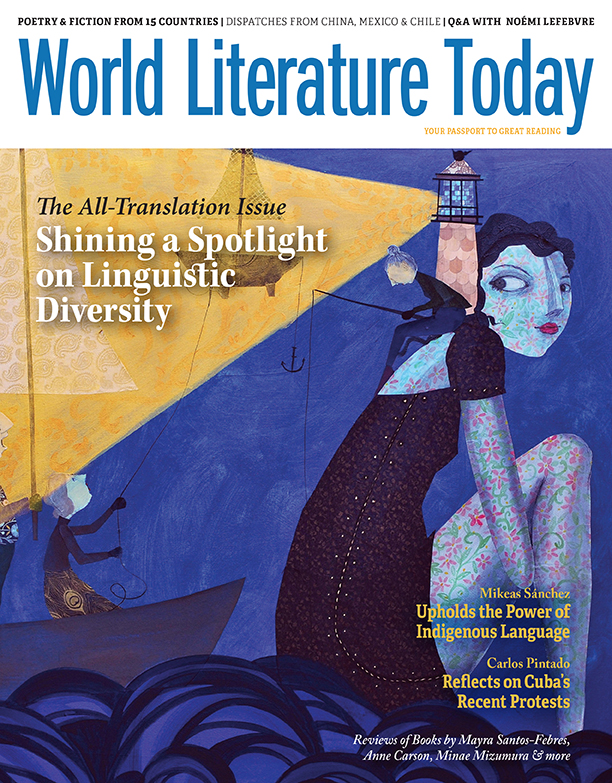The Forest of Puerto Varas

THE CITY—rainy, with moody skies and smoke rising from the rooftops—gazes at the yawning lake that protects her, as if searching for something in its landscape. When the winds hush and the clouds break, where the water ends and the sky begins, the mystery appears: two volcanoes rise to meet her, though sometimes only for a moment in the evening.
Puerto Varas was founded on Lake Llanquihue at the end of the nineteenth century, in order to settle the cold, indomitable lands of the south of Chile. Back then she was called “the land of colonization” and populated mostly by German settlers. This explains the foreign architecture, the taller, blonder people, and the delicious strudel. Vestiges of this blend of Germany and Patagonia are found in every detail of the city. Two centuries later, we are the immigrants, the urbanites, we Santiaguinos traumatized from the congestion—in our roads, ears, and lungs—seeking refuge in this place, a city with one of the highest qualities of life in Chile.
The tourist towns around the lake, which is the second largest in the country, are surrounded by extensive carpets of green, still untouched by humans. They protect coigue, ulmo, arrayán, canelo, and other native trees, which in turn protect foxes, güiñas, chucaos, pitíos, and other birds and animals. Today, across nearly all the south where unspoiled nature once ruled, plants and trees have been felled for their cellulose fiber. Pine and eucalyptus, used for construction and firewood, have been planted in their place, making the soil acidic and sucking the water from the live, fertile earth. But in Puerto Varas some of those vanishing green treasures persist. It’s one of the few places where the Patagonian alerce can still be found—a giant, millenary tree of reddish wood, once used to make wooden shingles for all the houses and buildings in the region. Today the tree is protected heritage and felling it is prohibited, although mafias still seek its wood to sell as contraband.
During one of our outings on my first trip to Puerto Varas, we made the most of my son napping in the car and pulled over to take a closer look at the thick jungle that hides the alerces. Delicate rain began showering down upon them, making their fern companions glisten. The air was pure, unlike the air I breathe in Santiago, one of the most polluted capitals in the world. That moment standing before the forest was short-lived, lasting only until my son woke up, but stayed etched in my mind. In my darkest moments, I take refuge in that memory of the jungle rustling in the wind, the trees seeming to dance only for us.
With the devastation of the earth’s natural resources, my dystopian mind views southern Chile as a perfect refuge. Considering the number of foreigners and Santiaguinos buying up land, like those who build bunkers to prepare for global collapse, I suppose I’m not the only one who feels this way. With that thought in mind, in a desperate act—a seeming tendency in my generation—at the height of quarantine last year, I too bought a piece of that idyllic land, with the dream of protecting her and, perhaps, one day living there. Because if there’s one place in this world where I’d like to shelter from the chaos, it’s in Chile, in Patagonia, in the forest of Puerto Varas.
Translation from the Spanish




